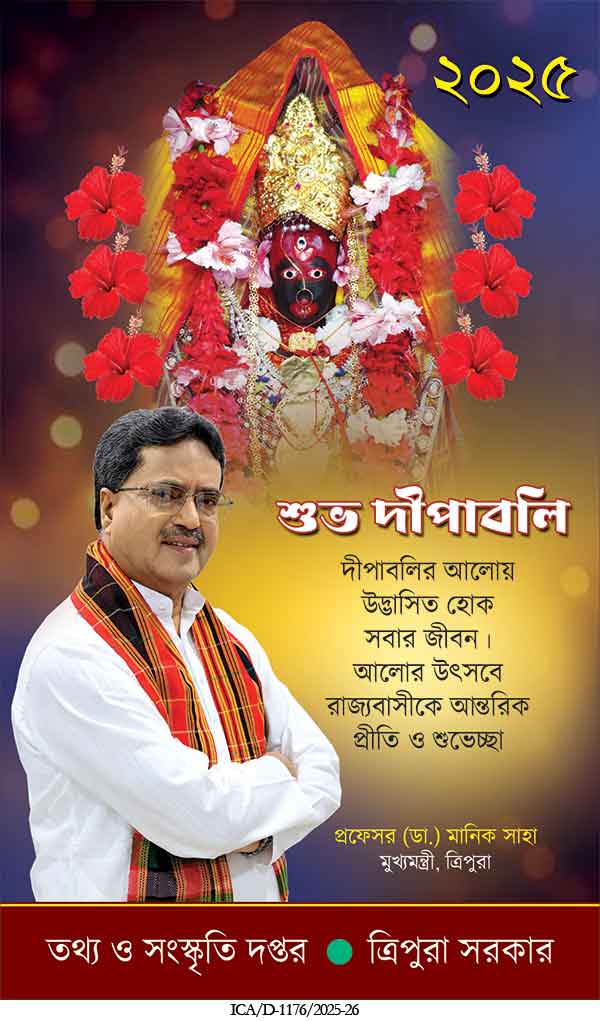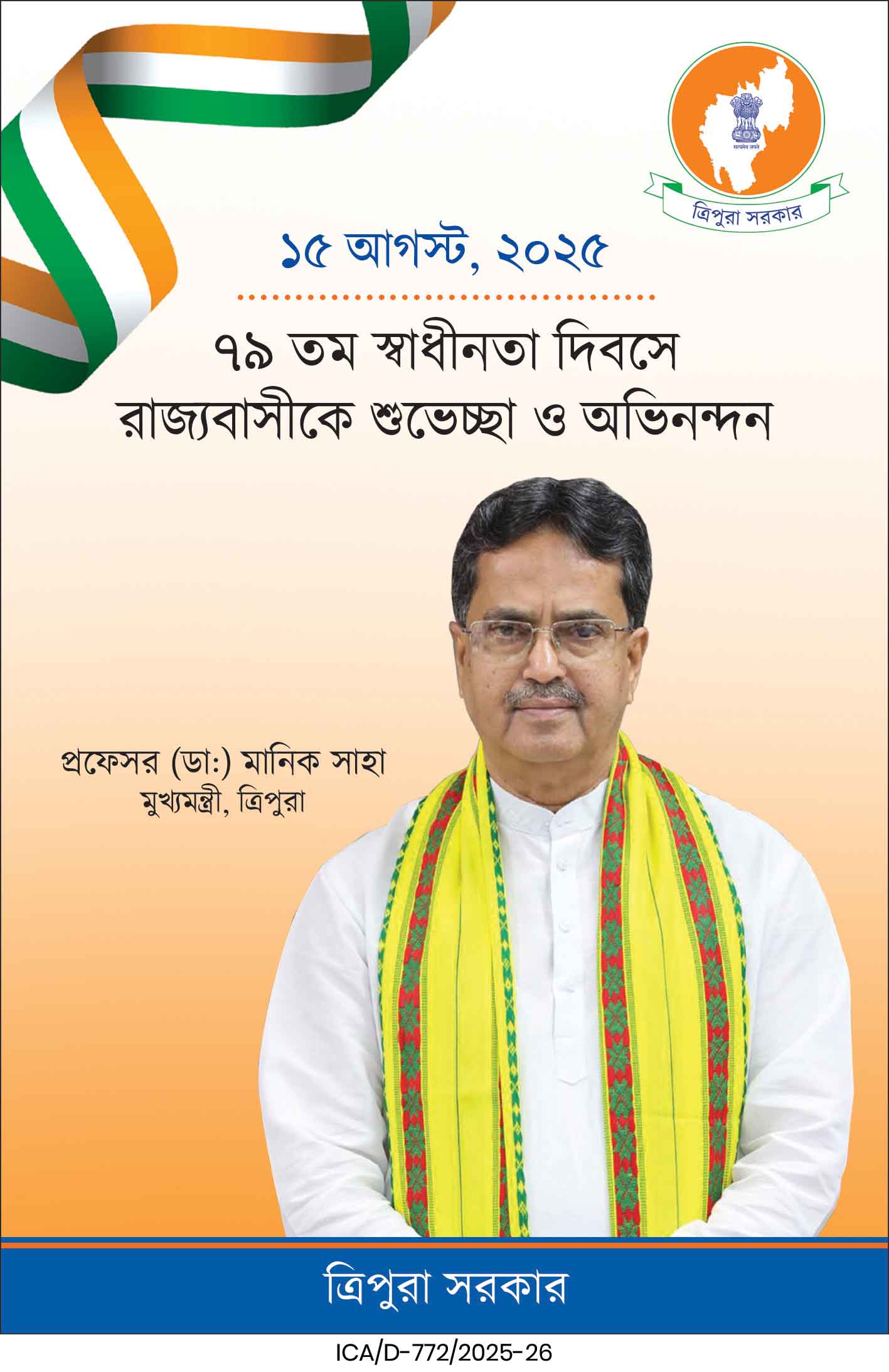Tripura Secretary Brijesh Pandey presented the state’s action plan under Vibrant Villages Programme Phase II at a national workshop in New Delhi. With initiatives like tea garden tourism in Kadamtala and adventure sports in Dasda, Tripura aims to boost border livelihoods, connectivity, and cultural integration along the Bangladesh border.
Tripura made a strong pitch for inclusive border development as State Secretary Brijesh Pandey presented the state’s action plan during the inaugural session of the two-day national workshop on the Vibrant Villages Programme (VVP) Phase II, held at Sushma Swaraj Bhawan, New Delhi, on August 25–26. The workshop was organized by the Ministry of Home Affairs (MHA), Government of India, and focused on enhancing capacity-building for State Nodal Officers under the ambitious rural transformation initiative.
The Vibrant Villages Programme, first launched with an aim to empower border populations in areas adjoining China and Pakistan, has now entered Phase II with a renewed focus on India’s eastern borders. For the first time, villages along the Bangladesh border, particularly in states like Tripura, are being brought under the developmental fold of VVP. The programme aims not only to strengthen infrastructure in remote villages but also to boost livelihood opportunities, ensure better connectivity, and promote cultural integration.
Tripura’s Representation in the Workshop
Tripura’s delegation was led by Secretary Brijesh Pandey, who presented the state’s action plan outlining strategies for sustainable growth and community empowerment in border areas. The plan emphasized enhancing livelihood opportunities, improving tourism potential, and investing in infrastructure to bridge gaps in remote locations.
Joining the delegation were Additional District Magistrates (ADMs) from Khowai and North Tripura districts, who showcased localized initiatives and highlighted the unique needs of their regions. On the inaugural day, North Tripura’s ADM Bijay Sinha actively participated in the discussions, while the Union Home Minister Amit Shah formally inaugurated the workshop, setting the tone for a collaborative approach to national border development.
Key Initiatives Highlighted for Tripura
One of the major announcements under Tripura’s VVP action plan was the focus on promoting Tea Garden Tourism in Kadamtala, North Tripura. By leveraging the region’s scenic tea estates, the government aims to attract visitors and generate alternative sources of income for local communities. The plan also envisions creating infrastructure around hospitality, homestays, and guided tours to showcase the unique culture of Tripura’s tea-growing areas.
Another notable highlight was the promotion of Adventure Sports in Khantalang, Dasda, a move designed to engage the youth, attract tourists, and develop an alternative economic model in the border belt. Adventure activities, including trekking, rock climbing, and eco-tourism initiatives, are expected to give a much-needed boost to the local economy while keeping young people meaningfully engaged.
These innovative approaches reflect Tripura’s commitment to integrating development with sustainability and cultural heritage. The state government believes that empowering border communities through such initiatives will strengthen not just the economy but also the emotional and cultural ties of the people with the nation.
Vibrant Villages Programme in Khowai
In Tripura’s Khowai district, nine Gram Panchayats have already been brought under the fold of the Vibrant Villages Programme. These Gram Panchayats are now set to benefit from improved road connectivity, better access to government services, and new livelihood opportunities. Officials stressed that the inclusion of these panchayats under VVP would significantly uplift rural living standards and encourage local entrepreneurship.
National Perspective and Future Goals
Union Home Minister Amit Shah, while inaugurating the workshop, reiterated the central government’s commitment to ensuring that border villages are not left behind in India’s development journey. He emphasized that the Vibrant Villages Programme is not merely about infrastructure but also about creating self-reliant, secure, and vibrant communities that contribute actively to national growth.
Tripura’s action plan reflects this broader national vision while tailoring solutions to local realities. The focus on tourism, sports, and rural livelihoods demonstrates how border states can transform their geographic challenges into opportunities.
Looking Ahead
The two-day workshop served as a platform for knowledge-sharing and collaborative planning among State Nodal Officers, district officials, and policymakers. For Tripura, participation in VVP Phase II marks a significant milestone in its journey to strengthen border development.
| Also Read: Congress protests in Bishalgarh after brutal attack on teacher |
With its focus on cultural integration, tourism promotion, and livelihood creation, Tripura is aiming to set a model for border village transformation in India’s northeast. The inclusion of local officials like ADMs from Khowai and North Tripura further ensures that development initiatives are rooted in grassroots realities and community aspirations.
As the Vibrant Villages Programme moves forward, the success of projects such as tea tourism in Kadamtala and adventure sports in Dasda will likely inspire similar models across India’s border regions. For the people of Tripura’s border villages, this initiative brings renewed hope of prosperity, connectivity, and a brighter future.





